|
|
STUDY AREA
6.0 Integrated Wastewater Management System
The treatment of domestic sewage in natural systems such as constructed wetlands and lagoons is being practiced in developing nations. Significant advantages are its construction and operation are simple and economically viable. Lagoon systems are associated with a high growth rate of phytoplankton that are beneficial and are caused by the influence of light and the continuous nutrient inflow. Algal growth contributes towards the treatment of wastewater by transforming dissolved nutrients into particle aggregates (biomass). Algal retention in the lagoon helps in the treatment, which has to be harvested at regular interval to ensure effective treatment. Wetlands consisting of reed-bed and algal pond help in the removal of nutrients (Mahapatra et al., 2011; 2013).
Emergent macrophytes (such as Typha) act as a filter in removing suspended matter and avoiding anaerobic conditions by the root zone oxidation and the dissolved nutrients would be taken up by the lagoon algae. This type of treatment helps in augmenting the existing treatment system in complete removal of nutrients and bacteria. The combination of wetlands (with macrophytes assemblages), algal lagoon and a sustained harvesting of algae and macrophytes would provide complete solution to wastewater treatment systems with minimal maintenance. Integrated wetland system at Jakkur provides an opportunity to assess the efficacy of treatment apart from providing insights for replicating similar systems to address the impending water scarcity in the rapidly urbanising Bangalore.
6.1 Insights to the efficacy of treatment: The treatment plant (1.6 Ha) with an installed capacity of 10 MLD, comprises of an Upflow Anaerobic Sludge Balnket Reactor (UASB) with an extended aeration system for sewage treatment. The treatment effluent then gets into wetlands (settling basin) of spatial extent ~4.63 hecatres consisting of diverse macrophytes such as Typha sp., Cyperus sp., Ludwigia sp., Alternanthera sp., Water hyacinth sp., etc. in the shallow region (with an area of ~1.8 hectares) followed by deeper algal basin (covering an area of about 2.8 hecatre). This being the significant functional component with macrophytes and algae jointly helps in the nutrient removal and wastewater remediation. The water from the settling basin flow pases through three sluices of which only the middle one is functional (with moderate flow). This water flows into Jakkur lake that spans over 45 hectares. There were notably less occurance of floating macrophytes, except near the outfalls (~0.5 Ha) due to blockage of the ouflow channels by solid wastes and debris. These macrophytes are being managed by local fishermen. Water in the Jakkur lake is clear with abundant phytoplankton diversity and acceptable densities, which indicates of a healthy trophic status.
The nutrient analysis shows (illustrated in Figure 4), that treatment happens due to immergent macrophytes of the wetlands and algae, which removes ~45% COD, ~66 % BOD, ~33 % NO3-N and ~40 % PO43—P. Jakkur lake treats the water and acts as the final level of treatment which shown as stage two that removes ~ 32 % COD, ~23% BOD, ~ 0.3 % NO3-N and ~34 % PO43—P.. The synergestic mechanism of sewage treatment plants followed by wetlands helps in the complete removal of nutrients to acceptable levels according to CPCB norms.
Jakkur STP (of 10 MLD capacity) treats only 6 MLD of sewage that is drawn from Yelhanka town. Yet, It is observed that sewer channel carrying voluminous wastewater with the treatment plant effluents into wetlands. The major nutrient removal and polishing is done by the manmade wetland and the lake. This wetland comprise of emergent macrophytes as Typha augustata, etc and plays a key role in oxygenation of soil subsystems through root zone oxidation and entrapment of necessary nutrients that otherwise would cause an algal bloom in the lake. The algal species in this manmade wetland region (Figure 5) primarily comprised of memebers of chlorophyceae followed by cyanophyceae, eugelnophyceae and bacillariophyceae (Figure 6). The relative abundances are provided in the pie-diagrams below. The detailed list of algal species, their presence and absence have been listed and provided in Table 4.

      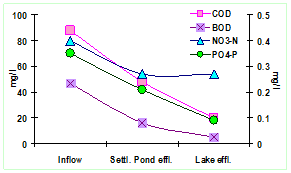
Figure 4: Integrated wastewater management system
Table 4: Algal species in Jakkur lake system
S.No |
Algae |
Site1 |
Site2 |
Site3 |
Site4 |
Site5 |
Site6 |
Site7 |
Site8 |
Site9 |
1 |
Actinastrum sp. |
+ |
+ |
+ |
+ |
+ |
+ |
+ |
+ |
+ |
2 |
Anabaena sp. |
+ |
+ |
+ |
+ |
|
|
|
|
|
3 |
Ankistrodesmus sp. |
|
|
|
+ |
+ |
|
|
+ |
+ |
4 |
Aphanocapsa sp. |
+ |
+ |
+ |
+ |
+ |
|
|
+ |
+ |
5 |
Arthrodesmus sp. |
|
+ |
+ |
+ |
+ |
|
|
|
+ |
6 |
Asterococcus sp. |
+ |
+ |
+ |
+ |
+ |
+ |
+ |
|
+ |
7 |
Chlorella sp. |
+ |
+ |
+ |
+ |
+ |
+ |
+ |
+ |
+ |
8 |
Chroococcus sp. |
+ |
|
+ |
+ |
+ |
|
+ |
+ |
+ |
9 |
Cladophora sp. |
|
|
|
|
|
+ |
|
|
|
10 |
Closterium sp. |
+ |
+ |
+ |
+ |
+ |
+ |
+ |
+ |
+ |
11 |
Coelastrum sp. |
|
+ |
+ |
+ |
+ |
+ |
+ |
+ |
|
12 |
Coelosphaerium sp. |
|
|
|
|
|
|
|
+ |
|
13 |
Coenocystis sp. |
|
|
|
|
|
|
|
+ |
|
14 |
Cosmarium sp. |
+ |
+ |
+ |
+ |
+ |
|
+ |
+ |
+ |
15 |
Crucigenia sp. |
+ |
+ |
+ |
+ |
+ |
+ |
+ |
+ |
+ |
16 |
Cyclotella sp. |
+ |
+ |
+ |
+ |
+ |
+ |
|
+ |
+ |
17 |
Cymbella sp. |
|
|
+ |
+ |
|
|
|
|
|
18 |
Desmodesmus sp. |
+ |
|
|
|
|
|
|
+ |
+ |
19 |
Dictyococcus sp. |
|
+ |
+ |
+ |
+ |
+ |
+ |
|
+ |
20 |
Dictyosphaerium sp. |
|
+ |
+ |
+ |
+ |
+ |
+ |
+ |
+ |
21 |
Eudorina sp. |
|
|
+ |
|
|
|
|
|
|
22 |
Euglena spp. |
+ |
+ |
+ |
+ |
+ |
+ |
+ |
+ |
+ |
23 |
Glaucocystis sp. |
+ |
+ |
|
+ |
+ |
|
|
|
|
24 |
Gloeocystis sp. |
|
|
|
|
|
|
|
+ |
|
25 |
Golenkinia spp. |
|
+ |
|
|
+ |
+ |
|
+ |
|
26 |
Gomphonema sp. |
|
|
|
|
|
|
+ |
|
|
27 |
Gonium spp. |
+ |
+ |
+ |
+ |
+ |
+ |
+ |
+ |
+ |
28 |
Gyrosigma sp. |
|
|
|
|
+ |
|
|
|
|
29 |
Krichenerilla sp. |
+ |
+ |
+ |
+ |
+ |
+ |
+ |
+ |
+ |
30 |
Limnothrix sp. |
|
+ |
|
+ |
+ |
+ |
|
|
+ |
31 |
Melosira sp. |
+ |
+ |
+ |
+ |
+ |
|
|
+ |
+ |
32 |
Merismopedia sp. |
|
+ |
+ |
+ |
+ |
+ |
+ |
+ |
|
33 |
Micracitinium sp. |
|
+ |
+ |
+ |
+ |
+ |
+ |
+ |
+ |
34 |
Microcystis sp. |
+ |
+ |
+ |
+ |
+ |
|
|
+ |
|
35 |
Monoraphidium sp. |
+ |
+ |
+ |
+ |
+ |
+ |
+ |
+ |
|
36 |
Navicula sp. |
+ |
+ |
|
+ |
+ |
+ |
+ |
+ |
|
37 |
Nephrocystis sp. |
|
|
|
|
|
|
|
+ |
|
38 |
Nitzschia sp. |
+ |
+ |
|
+ |
+ |
|
+ |
+ |
+ |
39 |
Oocystis sp. |
+ |
|
+ |
+ |
+ |
+ |
+ |
|
+ |
40 |
Ophiocytium sp. |
|
|
|
|
|
|
|
+ |
|
41 |
Oscillatoria sp. |
+ |
|
|
|
+ |
+ |
+ |
|
|
42 |
Pandorina sp. |
|
|
|
|
+ |
+ |
+ |
|
+ |
43 |
Pediastrum sp. |
+ |
+ |
+ |
+ |
+ |
+ |
|
+ |
+ |
44 |
Phacus spp. |
+ |
+ |
+ |
+ |
+ |
+ |
+ |
+ |
+ |
45 |
Phormidium sp. |
+ |
+ |
+ |
+ |
+ |
|
|
+ |
+ |
46 |
Pinnularia sp. |
|
|
|
|
|
+ |
|
|
+ |
47 |
Plantothrix |
+ |
|
|
+ |
|
|
+ |
|
|
48 |
Pseudanabaena sp. |
|
|
|
|
|
+ |
|
|
|
49 |
Quadrigula sp. |
+ |
+ |
+ |
+ |
+ |
|
|
|
+ |
50 |
Radiocystis sp. |
+ |
+ |
+ |
+ |
+ |
|
+ |
|
+ |
51 |
Scenedesmus spp. |
+ |
+ |
+ |
+ |
+ |
+ |
+ |
+ |
+ |
52 |
Schroederia sp. |
|
+ |
+ |
+ |
+ |
|
+ |
|
+ |
53 |
Spirulina sp. |
|
+ |
+ |
+ |
+ |
+ |
+ |
+ |
|
54 |
Staurastrum sp. |
|
|
|
|
|
|
|
+ |
|
55 |
Stichococcus sp. |
+ |
+ |
+ |
+ |
+ |
+ |
|
|
+ |
56 |
Surirella sp. |
|
|
|
|
+ |
+ |
+ |
|
|
57 |
Synechococcus sp. |
|
|
|
|
|
|
|
+ |
|
58 |
Synedra sp. |
|
+ |
|
+ |
+ |
+ |
|
|
|
59 |
Synura sp. |
|
|
|
|
|
|
|
|
+ |
60 |
Tetraedron spp. |
+ |
+ |
+ |
+ |
+ |
+ |
+ |
+ |
+ |
61 |
Tetraedron spp. |
|
|
|
|
|
|
+ |
|
|
62 |
Tetrastrum sp. |
|
|
+ |
|
|
|
+ |
|
|
63 |
Trachelomonas sp. |
+ |
+ |
+ |
|
|
|
|
|
|
64 |
Xanthidium sp. |
+ |
|
|
|
|
|
|
|
|

Similarly macrophytes play an important role in the effluent stabilisation. Table 5 lists the prominent macrophytes of wetlands ecosystem at Jakkur. The distribution of the macrophytes in the wetland area as well as at the outfalls of the lake is provided in Figure 7. Typha augustata species were dominating (54%) in the wetland area followed by Alternanthera philoxeroides (28%). However even though the macrophyte population was scarce in the lake, but still amongst them Eicchornia crassipes (84%) were dominating (Figure 8), which were only restricted to the outlet reaches due to fish nets, deployed for fishing in core area.
Table 5: Macrophytes of Wetlands at Jakkur
Name: Alternanthera philoxeroides
Common name: Alligator weed
Habitat: grow in a variety of habitats, including dry land but usually found in water(Shallow water or wet soils, ditches, marshes, edges of ponds and slow-moving watercourses) These grow best under high-nutrient (eutrophic) conditions
Stems are pinkish, long, branched, and hollow. Fleshy, succulent stems can grow horizontally and float on the surface of the water, forming rafts, or form matted clumps which grow onto banks
Leaves are simple, elliptic, and have smooth margins. They are opposite in pairs or whorls, with a distinctive midrib, and range in size from 5-10 cm.
Flowers: Whitish, papery ball-shaped flowers that grows on stalks.
Fibrous roots arising at the stem nodes may hang free in water or penetrate into the sediment/soil.
Flowering: December-April
Harvesting period: May
Impact: Alligator weed disrupts the aquatic environment by blanketing the surface and impeding the penetration of light. Such blanketing can also prevent gaseous exchange (sometimes leading to anaerobic conditions) which adversely affects aquatic flora and fauna. It also competes with and displaces native flora along river and in wetlands |
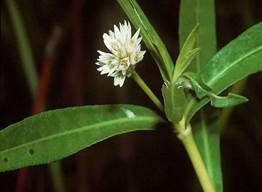

|
Name: Typha
Common name: Cattail
Description: It is a common perennial marsh, Aquatic or wetland plant in temperate, tropical, and subtropical climates. Plants are rhizomatous monoecious herb, grow upto 1.5-3m high, Leaves radical, sheath white. Flowering stem length is typically equal to or somewhat longer than leaf length. Numerous tiny, dense, flowers occur in a terminal spike that is 0.7 to 2 inches, Male flowers make up the upper, narrower half of the spike and female flowers the lower, slightly wider half
Flowering: June- August
Harvesting period: September
Habitat: It grows in shallow water of lakes, rivers, ponds, marshes, and ditches. These species grow vigorously under eutrophic conditions and in low nutrient wetlands, they grow sparsely.
Significance: Phytoremediation, wastewater treatment, Used as medicine, fodder |
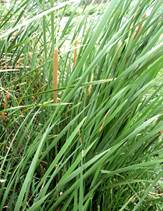
|
Name: Lemna
Common name:Common duckweed
Lemna minor: free-floating aquatic plants, with one, two or three leaves each with a single root hanging in the water; as more leaves grow, the plants divide and become separate individuals. The root is 1-2 cm long. The leaves are oval, 1-8 mm long and 0.6-5 mm broad, light green, with three (rarely five) veins, and small air spaces to assist flotation. It propagates mainly by division, and flowers rarely produced.
Habitat: Grows in water with high nutrient levels and a pH of between 5 and 9, optimally between 6.5 and 7.5, and temperatures between 6 and 33 °C.
Significance: Important food resource for fish and birds(ducks)
|

Lemna minor
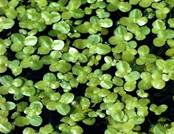
Lemna gibba
|
Name: Cyperus
It is a perennial plant, which may reach a height of up to 40 cm.
Common name: nut grass, nut sedge
Habitat:Cyperus is found in cultivated fields, farmlands, neglected areas, wastelands, grasslands, at the edges of forests, and on roadsides, sandy or gravelly shores, riverbanks and irrigation canal banks. Grow profusely in nutrient rich environment.
Leaves: Leaves sprout in ranks of three from the base of the plant. The flower stems have a triangular cross-section. The flower is bisexual and has 3 stamina and a three-stigma carpel. The fruit is a three-angled achene.
Rhizome: The root system of a young plant initially forms white, fleshy rhizomes. Some rhizomes grow upward in the soil, then form a bulb-like structure from which new shoots and roots grow, and from the new roots, new rhizomes grow. Other rhizomes grow horizontally or downward, and form dark reddish-brown tubers or chains of tubers.
Harvesting period: November/December
Impacts/significance: It is a weed and the world's worst invasive weed based on its distribution and effect on crops. It contains several chemical compounds and used in medicines. |
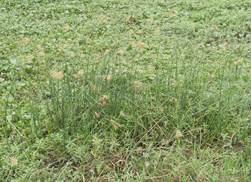
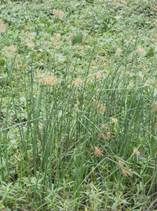
|
Name: Ludwigia
Common name: Water Primrose, Water Dragon, marshy jasmine
Habitat: Still or slow flowing freshwater habitats, occurring in marshes, swamps, ditches, ponds, and around lake margins, where they form dense floating mat. Shallow, nutrient-rich ponds, lakes, and drainage ditches provide ideal conditions for abundant growth of this weed.
Aquatic floating herb, floats crowded at nodes, white
Leaves alternate simple, ovate, obtuse entire
Flowers: Axillary, solitary, peduncle 2.5 cm long, corolla 5, yellow, inserted on the rim of the disc, base narrow.
Flowering: February-July
Harvesting period: August
Impacts: Once established, however, it forms dense, monotypic stands along shorelines and banks and then begins to sprawl out into the water and can form floating islands of vegetation. At this point, Ludwigia can clog waterways, damage structures and dominate native vegetation. Large accumulations of this species can lead to a depletion of oxygen levels in the water while also competing with native species for space and resources. |
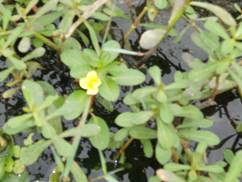

|
Name: Colocasia
Common name: Green Taro, cocoyam
Habitat: This species usually grows in wet fields and near the banks of ponds and streams.
Description: plant is a perennial herb with clusters of long heart- or arrowhead-shaped leaves
It produces heart shaped leaves 2-3 ft long and 1-2 ft across on 3 ft long stalks that all emerge from an upright tuberous rootstock, corm.
The stems are usually several feet high. Plant bears a short underground stem called a corm, where the plant stores starch produced by the leaves. The inflorescence is a pale green spathe and spadix
Flowers tiny, densely crowded on upper part of fleshy stalk, with female flowers below and male flowers above. Fruit a small berry, in clusters on the fleshy stalk.
Significance: the plant is used for several purposes across the worlds such as fodder, medicine or as an ornamental plant |
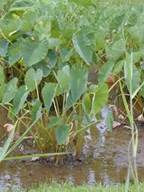
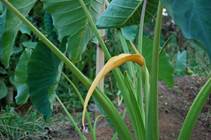
|
Name:Eichhornia crassipes
Common Name: Water hyacinth
Description: Water hyacinth is a free-floating perennial aquatic plant, with broad, thick, glossy, ovate leaves; leaves are 30-40 cm long with spongy petiole. Roots are fibrous and featherlike.
Flowering: March-July
Harvesting period: August
Habitat: Water hyacinth grows in still or slow-flowing fresh water in tropical and temperate climates. Optimum growth occurs at temperatures of between 28°C and 30°C, and requires abundant nitrogen, phosphorus and potassium.
Impact: Its wide spread occurrence in the fresh water lakes and riverbeds is harmful to fishing (depleting DO), rowing, and depleting water content from the water bodies and interfering in water utilization and other activities. Water hyacinth by its abundance of leaves, dense vegetation and innumerable rootlets in tertiary manner obstruct water flow in irrigation channels and displaces many aquatic grasses, which were useful as fodder for cattle, and suppresses the phytoplankton growth. Water hyacinth provides suitable breeding places for mosquitoes and other disease-carrying insects by stagnating the water in ditches and shallow areas.
Uses: Phytoremediation, wastewater treatment |
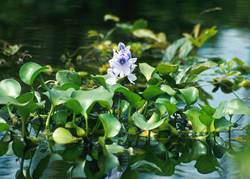

|
7.0 Land use (LU) Dynamics in Wetlands Catchment
Land use changes in the wetland catchments are the direct and indirect consequence of human actions to secure essential resources. These changes encompass the greatest environmental concerns of human populations today, including loss of biodiversity, pollution of water and soil, and changes in the climate. Monitoring and mitigating the negative consequences of LU changes, while sustaining the production of essential wetlands resources has therefore become a major priority today.
Land use change analyses is done using Landsat MSS (1973), IRS P6 data (2013) and Google Earth (http://earth.google.com). The Landsat data is cost effective, with high spatial resolution and freely downloadable from public domains like GLCF (http://glcfapp.glcf.umd.edu:8080/esdi/index.jsp) and USGS (http://glovis.usgs.gov/). IRS P6 LISS-IV (Indian Remote Sensing Satellite, part of the Indian Space Programme) data was procured from the National Remote Sensing Centre, Hyderabad (http://www.nrsc.gov.in).
Remote sensing data obtained were geo-referenced, rectified and cropped corresponding to the study area. Geo-registration of remote sensing data (Landsat data) has been done using ground control points collected from the field using pre calibrated GPS (Global Positioning System) and also from known points (such as road intersections, etc.) collected from geo-referenced topographic maps published by the Survey of India. In the correction process numerous GCP’s are located in terms of their two image coordinates; on the distorted image and in terms of their ground coordinates typically measured from a map or located in the field, in terms of UTM coordinates as well as latitude and longitude. The Landsat data of 1973 are with a spatial resolution of 57.5 m x 57.5 m (nominal resolution), while IRS P6 are of 5.8 m.
Land use analyses involved (i) generation of False Color Composite (FCC) of remote sensing data (bands–green, red and NIR). This composite image helps in locating heterogeneous patches in the landscape, (ii) selection of training polygons by covering 15% of the study area (polygons are uniformly distributed over the entire study area) (iii) loading these training polygons co-ordinates into pre-calibrated GPS, (vi) collection of the corresponding attribute data (land use types) for these polygons from the field. GPS helped in locating respective training polygons in the field, (iv) supplementing this information with Google Earth and (v) 60% of the training data has been used for classification, while the balance is used for validation or accuracy assessment. The land use analysis was done using supervised classification technique based on Gaussian maximum likelihood algorithm with training data (collected from field using GPS).
Classifier based on Gaussian Maximum Likelihood algorithm has been widely applied as an appropriate and efficient classifier to extract information from remote sensing data. This approach quantitatively evaluates both the variance and covariance of the category spectral response patterns when classifying an unknown pixel of remote sensing data, assuming the distribution of data points to be Gaussian. After evaluating the probability in each category, the pixel is assigned to the most likely class (highest probability value). GRASS GIS (Geographical Resources Analysis Support System, http://ces.iisc.ac.in/grass) a free and open source software with the robust support for processing both vector and raster data has been used for analyzing RS data. Temporal remote sensing data have been classified through supervised classification techniques by using available multi-temporal “ground truth” information. Earlier time data were classified using the training polygon along with attribute details compiled from the historical published topographic maps, vegetation maps, revenue maps, land records available from local administrative authorities.
Figure 9: Land use dynamics in Jakkur lake catchment |
1973 (57M) |
|
2013 (2.7M) |
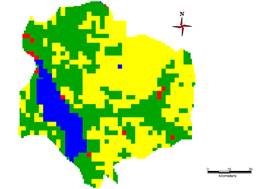
|

|
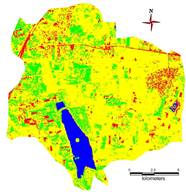
|
Table 6: Land use changes in Jakkur lake catchment (1973 -2013) |
|
Land Use categories (%) |
|
Years |
Urban |
Vegetation |
Water |
Others |
|
1973 |
1.19 |
44.06 |
5.63 |
49.1 |
|
2013 |
6.56 |
22.38 |
4.79 |
65.81 |
|
% Change |
5.37 |
-21.68 |
-0.84 |
18.71 |
|
Temporal remote sensing data of Landsat (1973) and IRS data (2013) were classified into four land use categories (Figure 9): tree vegetation, built-up, water-bodies and others (agriculture, open area, etc.). The analyses show decline of tree vegetation by 50% from 44.06% (1973) to 22.38% (2013), with an increase in built-up from 1.19 (1973) to 6.56% (2013). Details of land use analyses are listed in Table 6.
|
T.V. Ramachandra
Centre for Sustainable Technologies, Centre for infrastructure, Sustainable Transportation and Urban Planning (CiSTUP), Energy & Wetlands Research Group, Centre for Ecological Sciences, Indian Institute of Science, Bangalore – 560 012, INDIA.
E-mail : cestvr@ces.iisc.ac.in
Tel: 91-080-22933099/23600985,
Fax: 91-080-23601428/23600085
Web: http://ces.iisc.ac.in/energy
Durga Madhab MahapatraEnergy & Wetlands Research Group, Centre for Ecological Sciences, Indian Institute of Science, Bangalore – 560 012, INDIA.
E-mail: durgamadhab@ces.iisc.ac.in
Sudarshan P. BhatEnergy & Wetlands Research Group, Centre for Ecological Sciences, Indian Institute of Science, Bangalore – 560 012, INDIA.
E-mail: sudarshan@ces.iisc.ac.in
Asulabha K. S.
Energy & Wetlands Research Group, Centre for Ecological Sciences, Indian Institute of Science, Bangalore – 560 012, INDIA.
E-mail: asulabha@ces.iisc.ac.in
Sincy Varghese
Energy & Wetlands Research Group, Centre for Ecological Sciences, Indian Institute of Science, Bangalore – 560 012, INDIA.
E-mail: sincy@ces.iisc.ac.in
Bharath H. Aithal
Energy & Wetlands Research Group, Centre for Ecological Sciences, Indian Institute of Science, Bangalore – 560 012, INDIA.
E-mail: bharath@ces.iisc.ac.in
Citation: Ramachandra T.V., Durga Madhab Mahapatra, Sudarshan P. Bhat, Asulabha K.S., Sincy Varghese, Bharath H. Aithal, 2014. Integrated Wetlands Ecosystem: Sustainable Model to Mitigate Water Crisis in Bangalore, ENVIS Technical Report 76, Environmental Information System, CES, Indian Institute of Science, Bangalore 560012
| Contact Address : |
| |
Dr. T.V. Ramachandra
Energy & Wetlands Research Group,
Centre for Ecological Sciences,
New Biological Sciences Building, 3rd Floor, E-Wing, Lab: TE15
Indian Institute of Science, Bangalore – 560 012, INDIA.
Tel : 91-80-22933099 / 22933503(Ext:107) / 23600985
Fax : 91-80-23601428 / 23600085 / 23600683 [CES-TVR]
E-mail : cestvr@ces.iisc.ac.in, energy@ces.iisc.ac.in,
Web : http://wgbis.ces.iisc.ac.in/energy |
|